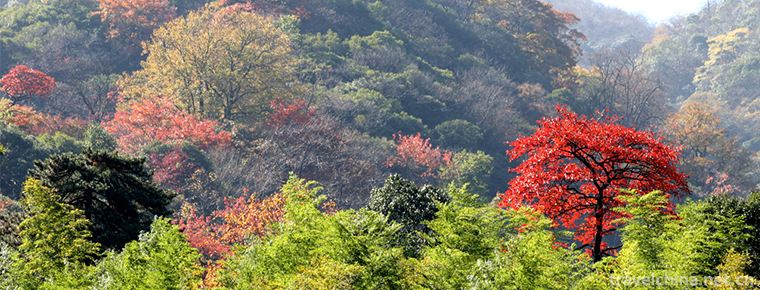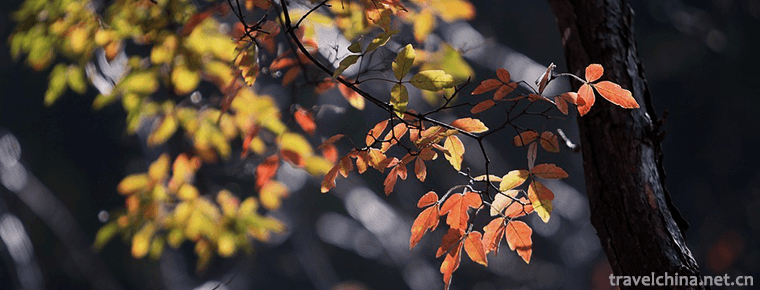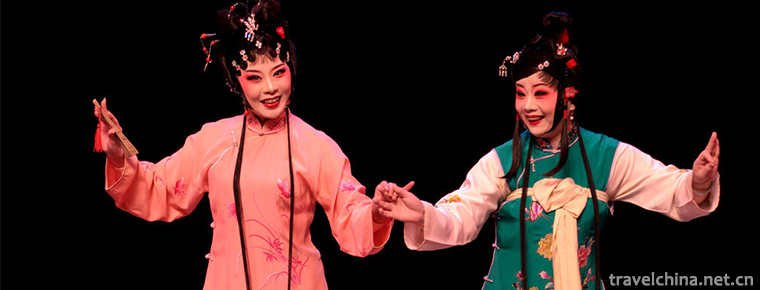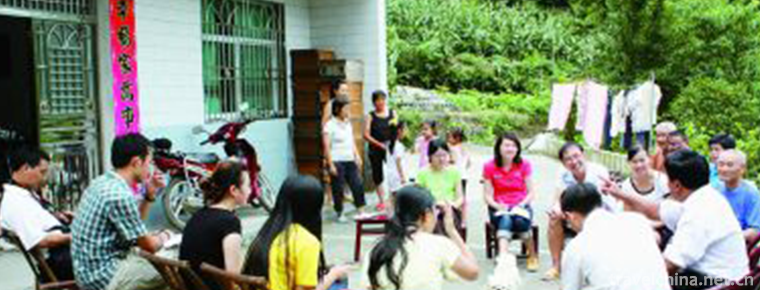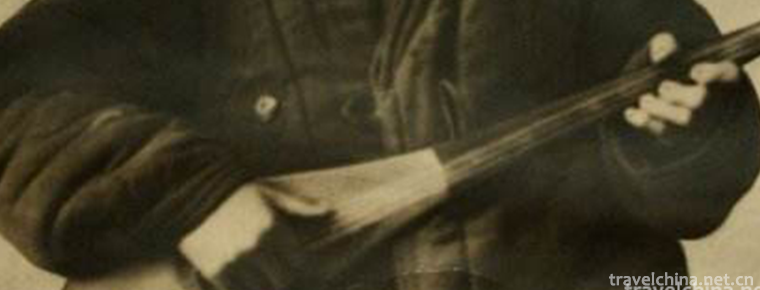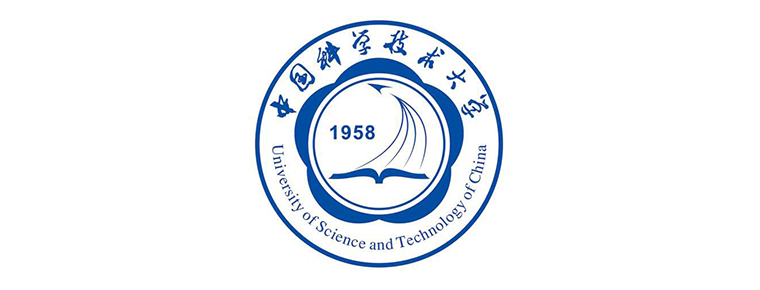Tan Zhenshan Folk Stories
Tan Zhenshan Folk Stories
Tan Zhenshan Folk Stories, the local traditional folk literature of Xinmin City, Liaoning Province, is one of the national intangible cultural heritage.
Tan Zhenshan family has a tradition of "telling stories and telling ancient times". Some elders in the family are good at telling stories. Many stories have been passed down in their family for many generations. Tan Zhenshan has collected a wide range of stories and carefully polished the stories of his predecessors, gradually forming its own story characteristics. Tan Zhenshan folk tales have distinct regional and farming livelihood characteristics, reflecting the production, life, ideals and aspirations of farmers in Liaohe Plain. Tan Zhenshan's folk stories mainly include stories of breaking through Guandong, stories of moral admonition, landscapes, customs and legends of Liaohe River Basin, ghost stories, life stories, various legends and jokes of people in the history of Northeast China, etc. Tan Zhenshan's folk tales are full of twists and turns and vivid and moving plots. Stories do not highlight the body rendering, but focus on tone and expression, simple and appealing style, vivid language, humor and wit.
On May 20, 2006, Tan Zhenshan's folktales were approved by the State Council of the People's Republic of China to be included in the first batch of national intangible cultural heritage lists with the heritage number I-20.
historical origin
In the urban-rural junction of 30 kilometers northwest of Shenyang City, there is a Taipingzhuang Village, which belongs to Xinmin City and Luojiafang Township. There is a neat courtyard in the back street of Taipingzhuang Village. At the east end of the four bungalows where the three sons live, there are two small buildings, about 20 square meters. The old couple of Tan Zhenshan live here. Taipingzhuang Village, where Tan Zhenshan lived, has a great reputation in history. It is situated at the foot of Shifo Temple Mountain. According to Xinmin City Chronicle, at the beginning of Qing Dynasty, the village was a "royal racetrack of the Qing Dynasty" with a radius of 100 miles. Emperor Guangxu once erected a large stone tablet here to show his praise.
In the 1950s, the Liaohe River at the foot of Shifo Temple Mountain was also a thousand sails race. There are post stations and wharfs. As a result, the Stone Buddha Temple has become a famous town far and near. Tan Zhenshan's grandmother's family name is Sun. She runs a big car shop in the town. Every night, businessmen and passers-by in the big car shop gather to drink, talk about tea, chat and tell stories. Tan Zhenshan, a 56-year-old, is particularly naughty, either in the east or in the west, or jumping and jumping to find people to make trouble. He seldom stops when he is a baby knot in Grandma's heart. In order not to disturb the guests to eat and chat, Grandma always holds him in her arms and tells him stories. Grandma can tell so many stories that Xiao Tan Zhenshan is fascinated by them. Strange to say, once he heard his grandmother tell him a story, he became very obedient, and listened to it once, he could write it down and learn it vividly. It was at that time that folk tales began to take root in Tan Zhenshan's heart. Speaking of those past events, Tan Zhenshan was deeply touched: "Grandma told me from childhood stories that people should be moral and meaningful, I will not forget. One of my uncles told me many legends about ghosts and foxes. A teacher named Guo Shengwu told me many civilized stories. There are Shen Doushan, Cui Wen, and the grandfather who later married Grandma. They are all storytellers and have a great influence on me.
Tan Zhenshan can tell many folk stories, but the content is not all-encompassing. The types of stories are not complicated, but local magical legends, ghost stories, legends of historical figures, and life stories and jokes.
Tan Zhenshan's folktales originated from relatives, friends and neighbors. For example, Tan Fuchen, the third uncle, is good at telling ghost stories, such as "Zhao Kuangxu and Red Devil" and "Guan Gong's Back Eye". Zhao Guobao, Tan Zhenshan's stepfather, is a carpenter who builds sailboats, and can also tell many folk stories such as "Loach Fertilizer Emperor's Seal". Several old gentlemen in Xin'anbao Village, such as Liu Wanxin and Shen Doushan, also told Tan Zhenshan stories such as "Confucius borrowed grain". Come and go, gather more, Tan Zhenshan can also tell more than 1000 folk stories.
Cultural characteristics
Content Framework
Tan Zhenshan's home is at the northeast end of the border of Faku County, Xinchengzi District of Shenyang City and Xinmin City. It is an immigrant village in Xianfeng period of Qing Dynasty. The residents come from Shandong, Henan and Hebei. Tan Zhenshan can tell as many as 1,000 folk stories, mainly about the production and life, knowledge and wisdom, ideals and aspirations of farmers in Liaohe Plain. The contents of Tan Zhenshan are mostly stories of folklore, ghosts and foxes, historical figures and life stories and jokes. Its content has important cultural and historical value. These stories are basically passed down through families and relatives. Tan Zhenshan has lived and worked on the black land that raised him for more than 80 years. He has also been telling stories to you in the fields, in Kangtou, in the streets and in front of the doors for more than 20 years. To educate young people about the struggle history of their predecessors, we need future generations to always remember the achievements and history of their ancestors.
artistic characteristics
Most of the heroes in Tan Zhenshan's stories are moral and meaningful. Tan Zhenshan also tells moral lectures for people as the heroes in the stories do. Whose family in the village writes a couplet of red stories and white story books and draws a couplet can not help inviting him. When there are disputes in the neighborhood, he also takes the initiative to persuade him. In the words of the villagers, "Who is ashamed not to give face when the old man appears?" Because he is respected and cultured, the old man has never done any heavy work in his life. In the village, he has been a clerk, accountant and water conservancy manager.
In May 1988, when Junichi Nomura, a professor at Japan National College, visited Shenyang, he went to Tan Zhenshan's house to listen to his stories. After listening, the Japanese guests coming from afar said deeply: "I understand why China is a moral country. Because their children have been listening to these true, good and beautiful stories since childhood. "
The folk stories he tells are precious in oral biography and original taste. It is rare in China and even in the world that a person can tell thousands of stories.
Inheritance
The inheritance of Tan Zhenshan's folktales can be divided into two forms, one is the collection of prose into books, the other is the inheritance of family form. Tan Limin, the granddaughter of Tan Zhenshan, inherits the tradition of his grandfather and is gradually growing into a new generation of folktale inheritors.
Tan Zhenshan has been telling stories for more than 70 years. There are some rules in Tan Zhenshan's storytelling, such as "three don't tell": women don't tell "meat" stories in the presence, if there are "meat" stories in the plot, point to the end; children don't tell ghost stories in the presence, if there are ghosts in the plot, Tan Zhenshan always tells stories that ghosts are pretended to be people, only to frighten children; when there are many people, he does not tell ideological consciousness. Good stories, at this time, he often highlights the "watchdog section", which is dedicated to those stories that have moral admonishment to the audience. The ending of the story varies from person to place, but the result must conform to the moral principles he advocates.
Today, Tan Zhenshan's folk tales have been selected into the national intangible cultural heritage list, and Tan Zhenshan has been named the representative successor of the project. What he worries about now is that these folktales are likely to be lost. He said that nowadays it's TV, computer and games. There are so many forms of entertainment that people's interest in listening to stories has declined. More importantly, nowadays, people are pursuing economic benefits, and no one pays for storytelling, so to speak, it will be self-extinguishing. Tan Zhenshan had never confiscated his apprentices. Today, four generations live together. There are thirty or forty children, old and young, but only four sons Tan Wenhai and granddaughter Tan Limin are fond of telling stories. But they can only tell 180 stories, which is far behind Tan Zhenshan's more than 1,000 stories.
"My story should be handed down orally. It's okay to have a good memory. I can't remember it once or twice if I have a bad memory. My granddaughter Tan Limin loves telling stories and always says she wants to inherit this thing, but she works in Shenyang, after all, it is not specially engaged in this! "Whether she can inherit these stories or not, Tan Zhenshan has no idea. He said, "Now the children are busy with their studies, the young people are busy making money, the people who are over forty or fifty years old are playing mahjong, and the good scene of storytelling will never come back. Before the 1960s, mainly the villagers listened to me tell stories. After the 1980s, mainly the outsiders let me tell stories. Now I can only talk to the tape recorder and video recorder.
In July 1992, Tan Zhenshan went abroad and was invited to attend the World Folk Art Exposition in Japan, becoming the first folklorist to go abroad.
He went on stage to tell three stories, namely "The Old Turtle Returns Grace", "The Cave Recognizes the Virtuous Girl" and "Three Endurances Save Wife and Daughter". Japanese National College professor Junichi Nomura commented that Chinese folktales are good, propagating moral benevolence and justice, and mostly telling truth, goodness and beauty. Jiang Fan, a Chinese scholar who has studied Tan Zhenshan for many years, believes that Tan Zhenshan's folk stories are based on oral biography, original flavor, and that a person can tell thousands of stories, which is rare in China in the world. The publishing department also published "Selected Stories of Tan Zhenshan, Liaoning Volume of the Integration of Chinese Folk Literature", roughly calculating that there are more than 1000 stories in it. Tan Zhenshan was awarded the title of "folk artist" by Liaoning Provincial Department of Culture.
Manifestation
Tan Zhenshan's folk stories are basically told in the form of oral vernacular through the inheritance of his family and friends. He tells stories in the fields, kangtou, street crossings and front doors. He is very simple, good at controlling the audience, creating an atmosphere for telling stories. He has excellent narrative skills, does not highlight body rendering, pays attention to tone and expression, and has vivid plot twists and turns, simple and appealing style. 。
Inheritance and Protection
Inheritance value
Tan Zhenshan's story tells about the production and life, knowledge and wisdom, ideals and aspirations of farmers in Liaohe Plain, which has important cultural and historical value. Continuous inheritance can enable the inheritors or more people to have more understanding, enlightenment, sublimation from the story, and so on. How to fully tap the cultural implications behind the story teller and the story teller, and a series of enlightenments.
The state attaches great importance to the protection of intangible cultural heritage. On May 20, 2006, Tan Zhenshan folk tales were approved by the State Council and listed in the first batch of national intangible cultural heritage list. On June 5, 2007, Tan Zhenshan of Xinmin City, Liaoning Province, was confirmed by the Ministry of Culture as the representative successor of the cultural heritage project.
On April 16, 2011, Tan Zhenshan, known as the King of Stories "National Treasure", died of illness at the age of 86. It is consolatory that Tan Zhenshan's story is not "people go singing and rest". Song Changxin, curator of Xinmin Municipal Culture Museum, told reporters: "Before Tan Zhenshan's death, we had collected all the stories and images he told, and his granddaughter Tan Limin, who inherited the tradition of his grandfather, is gradually growing into a new generation of folk tale inheritors.
Heritage figures
Tan Zhenshan, born in Taipingzhuang Village, Luojiafang Township, Xinmin City, Liaoning Province, on November 10, 1925, is a folk tale teller and ancestral river. On June 5, 2007, he was selected as the representative successor of the first batch of national intangible cultural heritage projects and declared by Xinmin City, Liaoning Province. Project Name: Tan Zhenshan Folk Story.
protective measures
With the advent of the upsurge of intangible cultural heritage and the awakening of cultural awareness, the government and relevant departments are also taking measures to protect folk culture.
Since 1986, the arrangement of Tan Zhenshan's folktale literature has been started. In 1988, the Tan Zhenshan Tales Selected by Shenyang and Xinmin County was published, and Xinmin County Printing Factory printed (internal distribution).
In May 2006, "Tan Zhenshan Folk Stories" was listed in the first batch of "national intangible cultural heritage list". In 2007, "Selected Stories of Tan Zhenshan" was published. From May to October 2009, the Cultural Museum of Xinmin City, Liaoning Province, recorded 1 062 stories in order to protect the intangible cultural heritage of Tan Zhenshan folk tales. In 2010, "Tan Zhenshan and His Narrative Works" was published in Taiwan.
In 2015, the Shenyang Municipal Government incorporated the intangible cultural heritage protection work into the evaluation content of establishing advanced cultural counties and districts in the city and the annual work target responsibility system of the county cultural and sports bureau, and established the "Municipal intangible cultural heritage protection center" as a special independent protection institution. The State Council, provincial government and municipal government have allocated a total of 14 million yuan for the protection and inheritance of intangible cultural heritage. It can be said that the government has spent a lot of manpower, material and financial resources on the protection of intangible cultural heritage. Preliminary achievements have been made in the protection and inheritance of intangible cultural heritage in Shenyang. The "Non-Heritage" Conservation Center has published "Selected Stories of Tan Zhenshan" and "Stars of Fengtian Laizi". Six exhibition rooms and exhibition halls have been built, such as Northeast Drum and Opera Criticism (Han Huaxiao Art). A Beijing Opera Tang School Art Research Conference has been set up, 18 places for transmission have been set up, and thousands of people have participated in the study and training. Shenyang Intangible Cultural Heritage Museum has also been included in the cultural facilities construction plan, and is actively preparing for construction. Shenyang has set up a professional research team of 10 people in the intangible cultural heritage protection center.
Selected Stories of Tan Zhenshan, compiled by Professor Jiangfan in 2017, was officially published in Liaoning Education Publishing House in January 2007.
social influence
Social events
In 1988, Shenyang published a book for four folk artists, including Tan Zhenshan. That year, "Selected Stories of Tan Zhenshan" selected 53 folk stories of Tan Zhenshan. In May of the same year, when Junichi Nomura, a professor at Japan National College, visited Shenyang, he went to Tan Zhenshan's house to listen to his stories.
Tan Zhenshan's story has attracted the attention of academic circles at home and abroad. In 1992, Tan Zhenshan attended the World Folk Art Exposition in Japan at the invitation of the mayor of Yuanyo, Japan, and went on stage to tell three Chinese folk stories for Japanese, Indian, Korean, Italian and German scholars. They were "Old Turtle Return Grace", "Dongfang Recognize the Right Daughter" and "Sanren Save the Wife and Daughter". Professor Chen Yiyuan and his students from Taiwan's Zhongzheng University have visited Tan Zhenshan's home twice to collect records. Tan Zhenshan was the first folklorist to go to university to give lectures.
Honorary recognition
Story achievement is outstanding - Tan Zhenshan was named "excellent folk storyteller" by Liaoning Province in 1989.
In 1992, at the invitation of the Japanese side, Tan Zhenshan went to Japan to attend the World Folk Talk Exposition and became the only storyteller in China to go abroad to tell stories.
In 1998, the special project of "Investigation and Research of Folk Storyteller Tan Zhenshan and His Narrative Works" was approved by the National Science Association of Taiwan.
In 2006, he was recruited as a member of Liaoning Provincial Association of Folk Literature and Art Artists, and was elected as the deputy of the People's Congress of Xinmin County (today's Xinmin City) and the CPPCC Committee of the county with the special honor of storyteller.
In 2007, "Selected Stories of Tan Zhenshan" collected by Jiang Fan was published and won the "Mountain Flower Award of Chinese Folk Literature and Art" in the same year.
In 2010, Jiangfan and Professor Chen Yiyuan of Taiwan Successful University jointly collected and compiled the second book Tan Zhenshan and his narrative works, which was published in Taiwan. In May 2010, a new book conference was held at the Taiwan Literature Museum, which caused a sensation.
Cultural anecdotes
"Looking at the Plaque"
There used to be three talented people. The eldest is Zhao, the second is Qian, and the third is Sun. They are very good. They often drink together and write poems. They are like brothers and relatives. They never have a quarrel. However, these three people are all myopic, but no one says that their eyes are bad, they say that they have better eyes than others.
There was a big temple on the hillside of their Daxitou. It was said that a kindhearted man was going to send square plaques to the temple. Three of them decided to go to the temple and look at the plaques across a hundred meters to see whose eyes were good.
That evening, Mr. Zhao thought: Today, someone sent the plaque, I have to go to find out the truth first, tomorrow, when you look at the plaque, you can say exactly. Thinking of this, he came to the temple and asked a monk who cleaned the courtyard so as not to make a fool of himself on the spot tomorrow.
Zhao Xiucai saw it early and came to the Xitou Temple. When he saw that the monk Haiming was cleaning the temple, he went up and asked, "Master Haiming, can you tell me what the inscription on this plaque is?" Heming opened his mouth and said, "If there is a demand, it must be answered". Zhao Xiucai had counted in his heart and went home.
Besides, Qian Xiucai knows that his eyes are not bad, and he is very anxious. If he checks it tomorrow, he will not lose face. So, he took the moonlight to the temple, just in time, the temple door is not closed, all the monks are having evening classes. He went in and saw Heming monk on duty. He was about to close the temple door. He asked what the plaque was like. Heming told him, "That plaque in white, Phnom Penh." Qian Xiucai went home happily. Think: Tomorrow we will be right.
Sun Xiucai couldn't sleep at home either. He wanted to think about it and decided to ask him the truth. So, he went to the temple of Mount Benxi with one foot deep and one foot shallow. The coincidence was that Master Heming was on duty. He opened the door to Sun Xiucai. Sun Xiucai also asked, "Who sent this plaque to Master, please?" When Master Heming listened, what's wrong with this one? What about the plaque? By the way, he said, "It was from Mulina."
The next day, three talented people came to the village about a hundred meters before the temple and stood down. Qian Xiucai said to Sun Xiucai, "Let's let Big Brother Zhao see it first." Zhao Xiucai said, "Look what, there are not four words on the plaque `Do you ask for it and respond to it'." Qian Xiucai said, "Brother, what's that plaque like again?" Zhao Xiucai thought to himself: I didn't ask him last night. Qian Xiucai took over the reply: "Look what, isn't that plaque in white Phnom Penh?" Sun Xiucai asked, "Brother two, can any of you see what this plaque is written in small letters?" All of a sudden, Zhao and Qian were stumped. They regretted that they didn't ask one more question last night. As soon as Sun Xiucai saw that they were silent, he smiled and said, "My brothers, or my eyes, are all right. That line is a gift from Mulina."
As it happened, Master Heming came out and listened to the three talented men and laughed, "Don't look at the three donors, the plaque is still hanging" .

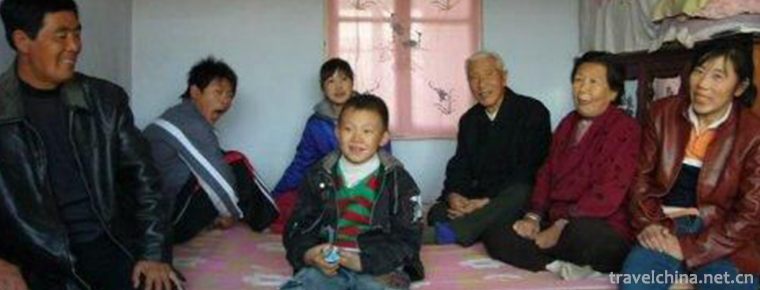
-
Park hyatt Guangzhou
In Guangzhou Park Hyatt Hotel, a traditional Lingnan culture and Gourmet Tour is opened. Guangzhou Baiyue Hotel integrates Lingnan's long history and culture with Baiyue's delicate modern .
Views: 161 Time 2018-12-16 -
Yunwushan Scenic Area
Yunwushan Scenic Spot is located in Paulownia Shop in the northwest of Huangpi District. It enjoys the reputation of "Xiling Resort Area, North Chu Famous Area, Beixi Border Barrier and Handizush.
Views: 182 Time 2018-12-22 -
Songxian Tianchishan National Forest Park
The Tianchishan National Forest Park in Songxian County, Luoyang City, is located in Xionger Mountains, northwest of Songxian County, Luoyang City, with a total area of 1716 hectares and a forest cove.
Views: 133 Time 2019-02-13 -
Eight treasure pear pot
Babao pear can is a delicious name, belonging to Shandong cuisine. Babao pear cans are exquisitely made and beautifully shaped, mostly for beets at banquets. If high-grade banquet, can be filled in sm.
Views: 236 Time 2019-03-26 -
Legend of Chen Sanwuniang
Li Jing Ji of Chen Sanwuniang is an ancient folklore, belonging to the legendary works of Ming Dynasty in China. The author has lost his life in Quanzhou (Chen Sang) of Fujian Province.
Views: 107 Time 2019-04-16 -
The Story of Duzhenwan
Duzhenwan stories cover myths and legends, life stories, ghosts, foxes, ghosts and other fields, including conspiracy, good and evil, kindness and hatred and other different types.
Views: 160 Time 2019-04-28 -
Kirgiz Kumzi Art
Kumzi is an ancient plucked instrument unique to the Kirgiz people. The meaning of "Kumzi" Kirgiz people is "beautiful musical instrument". Mainly spread in Xinjiang Kirgiz Autonom.
Views: 170 Time 2019-05-09 -
Southwest University of Finance and Economics
Southwest University of Finance and Economics is a national key university under the Ministry of Education's "211 Project" and "985 Project" dominant disciplines innovation platfor.
Views: 154 Time 2019-08-31 -
University Of Science And Technology Of China
University of Science & Technology China (University of Science and Technology of China) China University of science and technology Located Anhui Province Hefei City By Chinese Academy of Sciences.
Views: 121 Time 2019-11-23 -
Sports in Panzhihua
By the end of 2018, Panzhihua had 21 stadiums (gymnasiums), 56 sports social groups at all levels, 694 national fitness routes and 263 social sports guidance stations. The city's various sports teams won 80 gold medals, 91 silver medals and 72 bronze medals in provincial competitions. 124 national fitness activities were held throughout the year, with 460000 participants..
Views: 323 Time 2020-12-14 -
Meishan climate
Meishan city is located in the middle and low latitudes, located in the west of Sichuan Basin and the middle reaches of Minjiang River. It is characterized by the alternation of sea land monsoon every year. It has four distinct seasons, mild climate, abundant rainfall,.
Views: 334 Time 2020-12-18 -
Yibin science and technology
In 2019, there are 34 new high-tech enterprises, 13 provincial science and technology achievements transfer and transformation demonstration enterprises, 2 provincial science popularization bases and 6 Municipal Science Popularization base.
Views: 314 Time 2020-12-18

